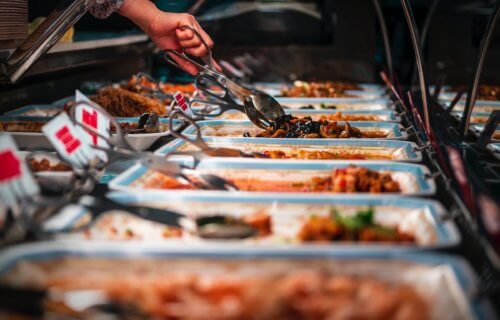LAWRENCE, Kan. — An all-you-can-eat buffet just screams extra pounds to many people. All those delicious choices tend to add up, no matter which direction your taste buds take you. Although too much of any food will likely lead to weight gain, a new study finds there are some items people should actively avoid to keep their weight in check.
A team from the University of Kansas say foods that they call “hyperpalatable” are particularly difficult for people to put down, even when they’re full.
“Hyperpalatable foods have combinations of ingredients that can enhance a food’s palatability and make a food’s rewarding properties artificially strong,” explains lead author Tera Fazzino, assistant professor of psychology at KU, in a university release. “Common examples would be various chocolates, hot dogs, pretzels or brownies — foods that can be difficult to stop eating.”
Hyperpalatable foods break down into two categories, carbohydrate and sodium (CSOD) foods or fat and sodium (FSOD) foods. The team compared these addictive munchies to the weight gain potential that comes from eating high-energy dense and ultra-processed foods.
During the experiment, a group of young, healthy-weight adults visited an all-you-can-eat buffet. Researchers measured each person’s body composition before the big meal and then a year later. The Kansas team specifically looked at the choices each participant ate and how much of each selection they ate.
“We were able to look at their behavioral tendency to consume certain types of foods,” Fazzino says. “Is that associated with greater energy intake relative to their physiological energy needs, and is it longitudinally associated with weight and percent body fat gain?”
Salty snacks are worse than fatty foods for weight gain
The results show that the sweets table at your local buffet is the biggest culprit when it comes to weight gain, more so than fatty foods. Researchers discovered that participants eating more hyperpalatable carbohydrate and sodium (CSOD) foods gained significantly more weight over the next year.
“A couple of classic examples of hyperpalatable CSOD foods would be pretzels or popcorn,” Fazzino notes.
Perhaps surprisingly, the team also finds people who ate a larger portion of fat and sodium hyperpalatable, high-energy dense, and ultra-processed foods did not experience any significant changes in their weight or body fat levels.
Is eating for pleasure the key of weight gain?
With those results in mind, researchers believe the desire to have hyperpalatable carbohydrate and sodium foods reveals how “hedonic eating” is the biggest trigger for packing on excess pounds.
“‘Hedonic eating’ is a general term that’s used in the literature to refer to eating that’s more focused on the rewarding characteristics of a food, as opposed to strictly satisfying physiological hunger,” the KU researcher explains. “The take-home point is really that people who tended to consume more carbohydrate and sodium foods — when they were freely available — were at greater risk for weight and body fat gain.”
While it’s easier for adults to avoid these tasty treats, Fazzino notes that babies also encounter these foods and don’t really have a say in their diet.
“When babies start to eat tablelike solid foods — that’s what we were interested in. We wanted to know the earliest exposure point possible for these foods and the exposure rate among infants. Also, we wanted to characterize the prevalence of these types of foods in baby foods that are available in the U.S. food system,” Fazzino explains.
Babies developing bad dieting habits?
A closer look at hyperpalatable foods and infants discovered that a staggering 90 percent of 147 babies eat these products. Most of this is coming from caregivers feeding young children adult foods, but the team also found 12 percent of baby food products also classify as hyperpalatable.
“We found when babies are starting to eat the adult foods, that’s the primary vehicle for their exposure,” Fazzino says. “We did characterize their overall caloric intake. For infants under 12 months, they consumed on average 38% of their daily food calories from hyperpalatable foods, and for older infants it was 52%.”
Study authors say these findings make it important for parents to limit the amount of adult foods their children eat at an early age. Consuming these addictive treats may lead to harmful eating habits later in life. According to the CDC, one in five U.S. children are obese. Obesity rates are highest among children between 12 and 19 years-old.
“If babies are consuming foods that are artificially highly rewarding at early in infancy, this could essentially indicate to their system physiologically — and to their brain — that, ‘Hey, this is what food is supposed to taste like, and this is how rewarding it’s supposed to be.’ Our concern is they’ll get used to this level of really intense taste and intense reward at an initial point, which will then make them want to consume those types of foods more as they grow up. Ultimately, the worry is that maybe this is an early predisposing factor for obesity risk,” Fazzino concludes.
The study appears in the journal Appetite.
